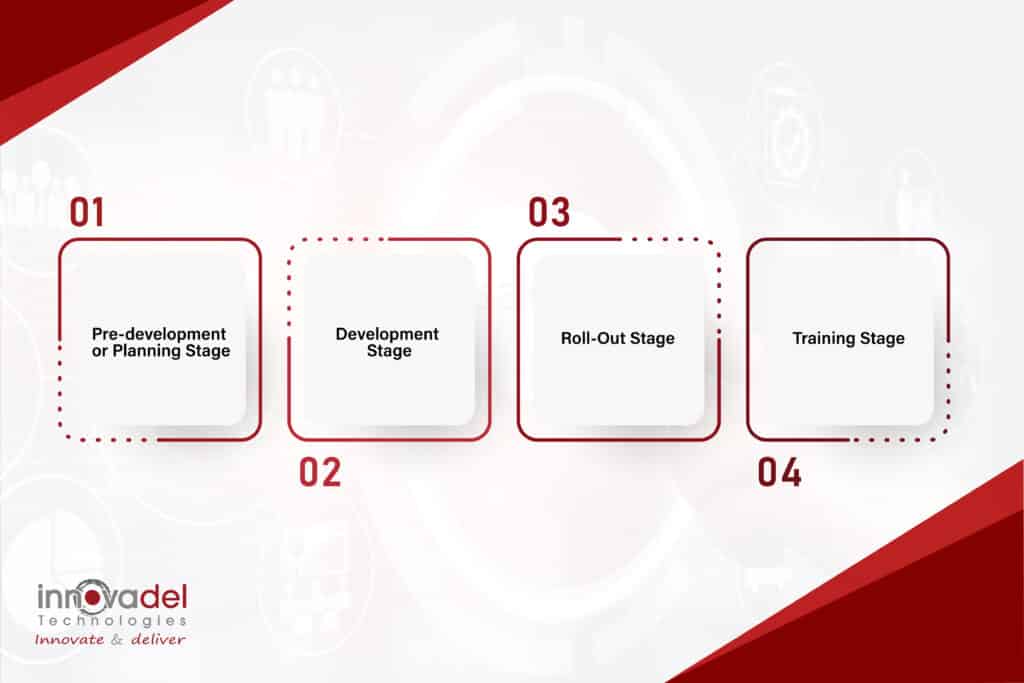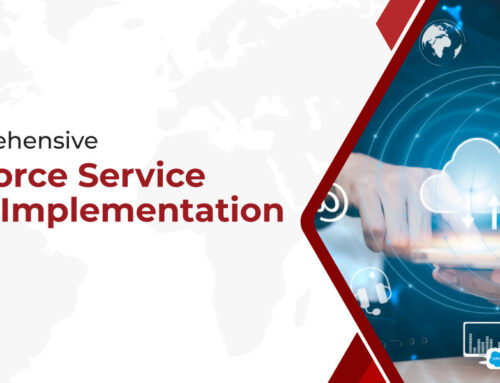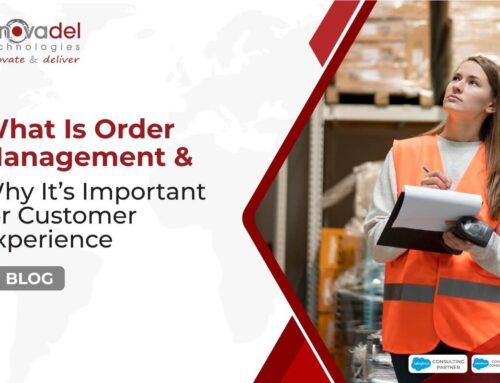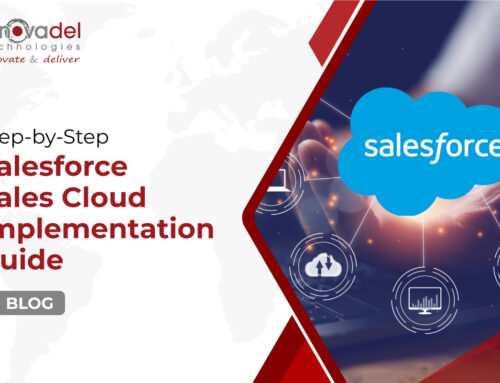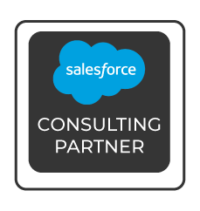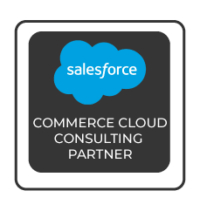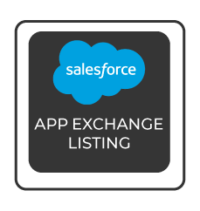Ultimate Salesforce Implementation Checklist For Your CRM Launch
Before discussing the Salesforce Implementation checklist, let’s start today’s blog with a question: “Why is seamless Customer Relationship Management (CRM) important?” That’s because 91% of companies with 11 or more employees and 50% of companies with 10 or fewer employees use CRM. CRM makes it easier for businesses to manage customer relationships and streamline processes, which definitely increases leads and revenue.
According to Salesforce research, businesses using CRM have witnessed an average of 29% rise in their sales. Many businesses struggle with Salesforce implementation and consequently can’t leverage the opportunity to increase their leads and revenue. The most common reason behind this is the complexity of Salesforce and, of course, the lack of proper knowledge and guidance in implementing Salesforce.
Salesforce implementation can be challenging due to the high failure rate of CRM solution implementations, which can range from 30% to 70%.
So, the next question that might come into your mind is, “How do I prepare for Salesforce implementation?” Of course, it’s planning, execution, and training to ensure successful software rollout.
We know it’s too much to handle. That’s why we’ve created a Salesforce implementation checklist so you can swiftly launch your CRM.
So, let’s have a look at it!
Why Should You Have a Salesforce Implementation Checklist?
As we already discussed, the failure rate of CRM implementation can be as high as 70%. But don’t worry; with a well-structured Salesforce implementation checklist, you can avoid hassles and seamlessly launch your CRM.
It’s a to-do list by experts with experience implementing Salesforce, providing a compelling analysis of the stages of implementation: planning, execution, deployment, and training.
Let’s see why having a checklist for implementation is a must!
- Helps in better forecasting
- Enhances effectiveness by streamlining tasks
- Mitigates errors for a smooth launch
- Provides a step-by-step guide to the implementation process
- Ensures that no crucial steps are missed along the way
- Makes the process more efficient
- Provides a clear roadmap for the implementation journey
- Boosts confidence that all necessary steps are being taken
- Increases the chances of successful software rollout
- Saves time and resources by avoiding hassles and mistakes
- Enables businesses to manage customer relationships and streamline processes.
Now, let’s have a look at the checklist you need to follow at every step of implementing Salesforce:
Pre-development or Planning Stage
- Get a top leader on board for your Salesforce project. They’ll set the goals from the top down, ensuring everyone knows what to focus on. For example, the Chief Revenue Officer (CRO) would be a good choice if it’s a Sales Cloud project.
- Put together a team to lead the project. These people will brainstorm ideas, test them, and ensure everything runs smoothly. For example, if it’s a project for Account Engagement (Pardot), you’ll want input from the marketing and sales teams to ensure the solution meets everyone’s needs.
- Picture what success looks like for your Salesforce project. Work with your top leader and other important people to set clear goals.
- Understand why it’s the right time for your Salesforce project. Look at your organization’s setup, customers, products, and competitors.
- Figure out exactly what your Salesforce project will involve. Talk to the people who use the system daily to learn about their needs and challenges.
- Decide on the technical details of your project. Like which tools you’ll use and who needs access to them.
- Choose how you’ll carry out your Salesforce project. You might go with a traditional approach where each step is completed before moving on, or you might opt for a more flexible method like Agile.
- Plan out how you’ll roll out your project. Will you start small and expand later? Will you launch everything at once or phase it in region by region?
- Think about how you’ll manage changes and keep everyone in the loop throughout the project.
- Consider setting up a Salesforce Center of Excellence (CoE) to keep things running smoothly even after the project is done.
- Set clear goals, make financial forecasts, and show how your project will benefit the company to ensure you have the funds you need for your project.
- Choose the right Salesforce implementation partner. Make sure everyone understands what’s expected of them and put it in writing.
Development Stage
In the execution stage, you’re finally diving into the nitty-gritty with the implementation team. Your main focus here?
- Get hands-on with the implementation team to refine and clean up your organizational data.
- Start by preparing your data and integration in an optimized and systematic order to ensure smooth migration to the Salesforce platform.
- Decide how much foundational architecture you want to establish before beginning development, laying out the essential components needed to customize Salesforce according to your short-term development plan.
- Understand the level of customization your Salesforce solution will require and anticipate the maintenance effort associated with it.
- Check and confirm all permissions and accesses for your selected data migration tool.
- Arrange and assess your data thoroughly, conducting data mapping to prevent duplication or inaccuracies.
- Consider implementing governance mechanisms such as a design authority to ensure proposed solutions align with your target architecture, a change control board to review and approve proposed changes, and a steering committee to oversee project delivery.
- Determine methods for tracking development progress, such as Agile methodologies with regular sprint reviews or project management tools like Jira or Asana.
- Develop a data migration strategy and plan that considers source data’s size, format, and accuracy. Focus on the preparatory work needed before the actual transfer to ensure a smooth transition.
- Integrate Salesforce with other essential business tools and automation systems for a unified data view.
Roll-Out Stage
- Finalize your deployment plan and checklist (deployment runbook) to ensure a smooth transition from testing to production.
- Identify who should participate in and lead user acceptance testing (UAT) to ensure the system meets business requirements and user needs.
- Conduct at least one successful dry run of data migration in a staging environment (sandbox), scheduling it with business and technical stakeholders for sign-off.
- Communicate the data migration plan, including any expected downtime, to the broader team to manage expectations and minimize disruptions.
- Develop a change management plan to clearly outline what changes will occur, who they affect, and how to manage them throughout the rollout process.
- Determine the mix of training methods to ensure users are equipped to utilize the new system effectively.
- Establish an ongoing support process, including criteria for transitioning from hypercare to ongoing support based on the impact of changes on workflows and solution complexity.
- Implement methods to monitor and encourage user adoption to ensure the system’s successful integration into daily operations.
Training Stage
- Following completion of user testing, proceed with training relevant individuals on system usage.
- Conduct thorough training sessions featuring live demos, seminars, video calls, and test cases.
- Evaluate training effectiveness to ensure users are adequately prepared to utilize the system.
- Launch the final Salesforce implementation and assemble a support team to assist end-users.
Types of Salesforce Implementation
Now that you know the Salesforce implementation checklist, let’s look at the different types of processes.
In-House Implementation
Did you know that only a handful of companies attempt an in-house Salesforce implementation? Approximately 90% of CRM customers rely on third-party partners for consulting and apps. However, some small and mid-sized organizations, and even some enterprises, take on the challenge of a fully in-house implementation project.
Well, we don’t recommend implementing it in-house if you don’t have enough knowledge, expertise, and, of course, resources. It can cost you more than outsourcing implementation.
Third-Party Implementation
There are a lot of Salesforce implementation partners and tools to help you with comprehensive services, from planning implementation to testing and maintenance. However, finding the right Salesforce implementation partner is important as you’re investing your time and resources, so you deserve a successful implementation.
If you’re looking for an expert Salesforce implementation company, Innovadel Technologies is your best bet. We have years of experience in implementing Salesforce for reputable businesses.
Hybrid Implementation
Planning the whole implementation for your business is a big step, and you want to make sure that it’s done right. A hybrid implementation approach is the best way to handle some elements independently while bringing an implementation partner for planning, developing, and data migration.
Salesforce implementation is an ongoing process, and you need to monitor and optimize it continuously to meet your business goals. Choose the proper deployment framework and regularly optimize it for a successful implementation.
Why Does Salesforce Implementation Fail?
Failure is inevitable in any project, even for Salesforce implementation. However, looking out for common mistakes is important so you can avoid them. Let’s have a look at some mistakes:
Poor Planning & Strategy
A lack of planning and strategy can cause disaster when implementing Salesforce. Without clear goals and a roadmap, businesses often fail to address their pain points, such as streamlining workflows and enhancing the customer experience. To avoid this, it’s important to set SMART goals: specific, Measurable, Achievable, Relevant, and Time-bound, and make sure everyone is on the same page.
Poor Data Quality & Migration
Getting your Salesforce implementation right is crucial, and that starts with data quality and migration. Accuracy, consistency, and accessibility are key. Poor data quality can lead to disastrous outcomes like bad customer experiences, flawed business strategies, trust issues, and revenue forecasting mishaps.
Poor Communication
Poor communication can result in misaligned expectations, inadequate training, and low user adoption. Feedback is crucial, too! Without it, businesses can’t identify areas for improvement, leading to decreased efficiency. To avoid failure, make sure stakeholders understand the benefits of Salesforce implementation services.
Well, these are just a few problems you need to avoid. There are plenty of others and what about them, so let’s discuss them in another blog.
Conclusion
Implementing Salesforce isn’t a simple task that you can complement without a roadmap or checklist. By following the Salesforce implementation checklist that we’ve discussed in this article, you can save a lot of time.
Finding a partner for Salesforce implementation services? You’re at the right place! Innovadel uses the best practices to seamlessly implement Salesforce into your existing system. Let’s connect for further discussion!
FAQs
What is Salesforce implementation?
Salesforce implementation involves setting up Salesforce products in a specific environment and configuring them to ensure they provide the maximum value for the solution.
How long does a Salesforce implementation take?
Implementing Salesforce usually takes a business 3-4 weeks. However, the time required may vary according to the business’s needs and goals. If you need a complex setup with a lot of customization, the implementation process may take several months.
How much is a Salesforce implementation?
If you’re considering implementing Salesforce for your business, it’s important to remember that the cost can vary depending on several factors. These include the size and complexity of your business, the level of customization required, the number of users, and other similar factors. Typically, though, mid-sized businesses can expect to pay between $75,000 to $200,000 for Salesforce implementation.
What are the stages of Salesforce implementation?
As a Salesforce consulting partner, we follow 6 stages:
- Kickoff
- Discovery
- Build
- Test
- Deploy
- Service
Can I implement Salesforce myself?
Yes, if you’re going for the basic setup. But we highly recommend you to hire a Salesforce implementation partner for guidance and quick results.
Related Posts
If you enjoyed reading this then please explore our other Articles below

